Hydrazine
Hydrazine is also called diamide with the formula being N2H4, the molecular weight of 32.05, and simple structure formula being H2N-NH2. It appears as colorless oily liquid with a similar pungent odor as ammonia and is highly toxic! It is mainly absorbed through the skin, respiratory tract and gastrointestinal with strong corrosive effect on the skin and mucous membranes. It has a melting point of 2 ℃, boiling point of 113.5 ℃ and density (15/4 ℃) of 1.011g / cm3. It can absorb water and carbon dioxide in the air and smoke at the same time. It is miscible with water, methanol and ethanol. It can form constant-boiling point mixture with water with the boiling point of 120.3 deg. C in which the hydrazine content is 68.5% (by weight). It is insoluble in ether, chloroform and benzene. If it contains trace amount of air, metal ions or irradiated with ultraviolet rays, it can cause explosion. It can also exhibit purple flame upon combustion with strong reduction capability.
It can corrode glass, rubber, leather, cork and so on. It has alkalinity and can form salts with inorganic acid. It is replacing the conventionally used sodium sulfite as the deoxidizer for the water feeding through the high-pressure boiler. It can also be applied to pharmaceuticals such as synthesizing the amino urea, isoniazid, isonicotinic hydrazide, anti-tuberculosis drugs, pesticides (maleic hydrazide, germination inhibitors) and nitrofurazone. It can be used as developing agents, antioxidants and reducing agents as well as foaming agents; it can also be used as jet fuel and rocket fuel. It can be used as the industrial chemical raw materials in the fields of plastic, rubber, photographic equipment, pharmaceuticals, pesticides, textiles and welding as well as for preventing corrosion and scavenging oxygen for boiler water. It can be manufactured through the action between sodium hydroxide, chlorine and ammonia (or urea) in the aqueous solution, etc. Alternatively, it can be prepared from the distillation of hydrazine hydrate and dehydrating agent such as sodium hydroxide or through the ammonolysis of the hydrazine salt. In order to obtain anhydrous hydrazine, people need to supplement dehydrating agent to the concentrate of the hydrazine hydrate. Those used as dehydrating agent include sodium hydroxide, potassium hydroxide and lime, etc. They should be distilled in an inert gas or inside vacuum.
Toxicity: mice subjecting to oral administration have a LD50 of 59 mg/kg (body weight); the value for rats is 60mg / kg (body weight). Guinea administrated percutaneously has LD50 of 190 mg/kg (body weight) and the value for rabbit is 91mg / kg (body weight). Inhalation for 4 hours by mice has a LC50 of 252ppm while for rats, the value is 570ppm. It is highly irritant to eye, nose and respiratory tract and destroy the central nervous system. Upon acute poisoning, local irritation symptoms such as nausea and vomiting occur first, followed by drowsiness, ataxia, convulsions and even coma. It can cause liver damage to some patients. Mice through oral administration can get lung tumor while rat can get liver tumors. National Cancer Institute (1ARC) has listed it as a possible human carcinogen chemical (insufficient evidence). USA (ACGIH) specified the threshold limit values in the air of the workplace be 0.1mg / m3. Soviet provided the maximal allowable concentration in the air workshop be 0.1mg / m3.
Hydrazine and its methyl derivative, when mixed with fuming nitric acid or nitrogen tetroxide, can be used as storable propellant to be applied to the launch vehicle. Hydrazine and amine can form mixed amine fuel (MAF) with several kinds of different hydrazine compound being formulated into mixed-hydrazine fuel (MHF) and are all used as propellants. Hydrazine and its derivatives have wide applications in the industrial production such as used as an intermediate in organic synthesis as well as for the pharmaceutical and synthetic dyes. The combination between hydrazine and water is called hydrazine hydrate with commonly used industrial version being 40% hydrazine hydrate which is safer than anhydrous hydrazine. Hydrazine can also be used as boiler water and some kinds of sewage treatment agent.
Hydrazine and methyl derivatives can easily absorb moisture, being easy to absorb carbon dioxide in the air to form a salt, resulting in precipitation. It can be slowly oxidized in the case of oxygen. In the liquid form, it can have fierce reaction with metal oxide and oxidizer violent, even causing spontaneous combustion or explosion. For example, the explosive agent of the mixture of hydrazine and nitromethane is more dangerous than TNT. Its ammonia odor can make people be timely alert. But at low concentrations, it is not easy to recognize it. It can be subject to long-term storage under conditions of nitrogen containers.
Hydrazine, unsymmetrical dimethyl hydrazine and phenylhydrazine are medium toxic. Methyl hydrazine is highly toxic. Intravenous and intraperitoneal injection has similar toxicity as oral administration.
High concentration and moderate concentration of hydrazine, methyl hydrazine and unsymmetrical dimethyl hydrazine are highly irritating to eye, nose and respiratory tract. When being presented in a concentration of about the lower explosive limit (2%), the people could not tolerate. Direct contamination of the skin can cause dermatitis as well as sensitization. Spills can cause severe irritation of the eyes, making permanent corneal damage and even blindness.
- Structure:
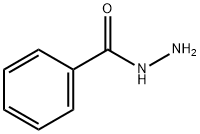
- Chemical Name:Benzoyl hydrazine
- CAS:613-94-5
- MF:C7H8N2O
- Structure:

- Chemical Name:Adipic dihydrazide
- CAS:1071-93-8
- MF:C6H14N4O2
- Structure:
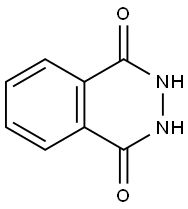
- Chemical Name:Phthalhydrazide
- CAS:1445-69-8
- MF:C8H6N2O2
- Structure:

- Chemical Name:2-Hydroxyethylhydrazine
- CAS:109-84-2
- MF:C2H8N2O
- Structure:
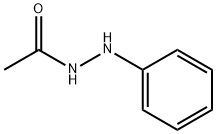
- Chemical Name:1-Acetyl-2-phenylhydrazine
- CAS:114-83-0
- MF:C8H10N2O
- Structure:
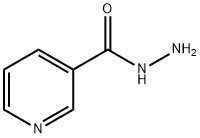
- Chemical Name:NICOTINIC ACID HYDRAZIDE
- CAS:553-53-7
- MF:C6H7N3O
- Structure:
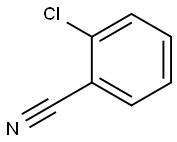
- Chemical Name:2-Chlorobenzonitrile
- CAS:873-32-5
- MF:C7H4ClN
- Structure:
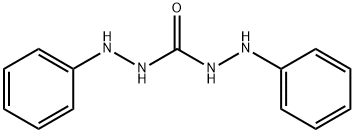
- Chemical Name:1,5-Diphenylcarbazide
- CAS:140-22-7
- MF:C13H14N4O
- Structure:
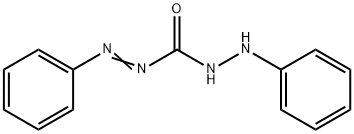
- Chemical Name:DIPHENYLCARBAZONE
- CAS:538-62-5
- MF:C13H12N4O
- Structure:
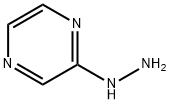
- Chemical Name:2-Hydrazinopyrazine
- CAS:54608-52-5
- MF:C4H6N4
- Structure:
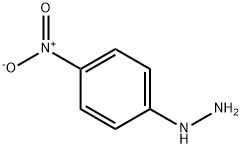
- Chemical Name:4-Nitrophenylhydrazine
- CAS:100-16-3
- MF:C6H7N3O2
- Structure:

- Chemical Name:(2-Methoxyphenyl)hydrazine hydrochloride
- CAS:6971-45-5
- MF:C8H14Cl2N2O
- Structure:

- Chemical Name:3-(Trifluoromethyl)phenylhydrazine hydrochloride
- CAS:3107-33-3
- MF:C7H8ClF3N2
- Structure:

- Chemical Name:4-Cyanophenylhydrazine hydrochloride
- CAS:2863-98-1
- MF:C7H8ClN3
- Structure:

- Chemical Name:1,2-Dimethylhydrazine Dihydrochloride
- CAS:306-37-6
- MF:C2H10Cl2N2
- Structure:

- Chemical Name:Formylhydrazine
- CAS:624-84-0
- MF:CH4N2O
- Structure:
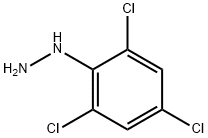
- Chemical Name:2,4,6-Trichlorophenylhydrazine
- CAS:5329-12-4
- MF:C6H5Cl3N2
- Structure:

- Chemical Name:Carbohydrazide
- CAS:497-18-7
- MF:CH6N4O
- Structure:

- Chemical Name:4-Benzyloxyphenylhydrazine hydrochloride
- CAS:52068-30-1
- MF:C13H15ClN2O
- Structure:

- Chemical Name:1,2-Diformylhydrazine
- CAS:628-36-4
- MF:C2H4N2O2
- Structure:
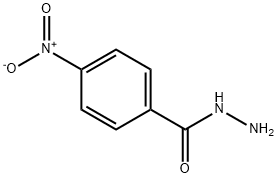
- Chemical Name:4-NITROBENZHYDRAZIDE
- CAS:636-97-5
- MF:C7H7N3O3
- Structure:

- Chemical Name:4-(Trifluoromethyl)phenylhydrazine hydrochloride
- CAS:2923-56-0
- MF:C7H8ClF3N2
- Structure:

- Chemical Name:2,3-Dichlorophenylhydrazine hydrochloride
- CAS:21938-47-6
- MF:C6H7Cl3N2
- Structure:

- Chemical Name:2-(Trifluoromethyl)phenylhydrazine hydrochloride
- CAS:3107-34-4
- MF:C7H8ClF3N2
- Structure:
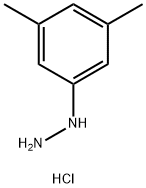
- Chemical Name:3,5-Dimethylphenylhydrazine hydrochloride
- CAS:60481-36-9
- MF:C8H13ClN2
- Structure:
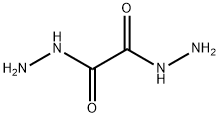
- Chemical Name:Oxalyl dihydrazide
- CAS:996-98-5
- MF:C2H6N4O2
- Structure:

- Chemical Name:Octanoic hydrazide
- CAS:6304-39-8
- MF:C8H18N2O
- Structure:
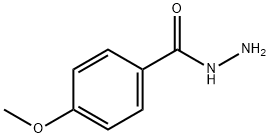
- Chemical Name:p-Anisohydrazide
- CAS:3290-99-1
- MF:C8H10N2O2
- Structure:

- Chemical Name:SEBACIC DIHYDRAZIDE
- CAS:925-83-7
- MF:C10H22N4O2
- Structure:

- Chemical Name:Bis(cyclohexanone)oxaldihydrazone
- CAS:370-81-0
- MF:C14H22N4O2
- Structure:
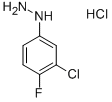
- Chemical Name:3-Chloro-4-fluorophenylhydrazine hydrochloride
- CAS:175135-74-7
- MF:C6H7Cl2FN2
- Structure:
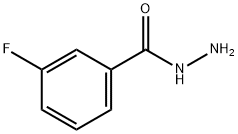
- Chemical Name:3-FLUOROBENZHYDRAZIDE
- CAS:499-55-8
- MF:C7H7FN2O
- Structure:
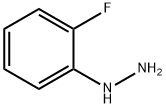
- Chemical Name:2-Fluorophenylhydrazine
- CAS:2368-80-1
- MF:C6H7FN2
- Structure:

- Chemical Name:Malonic dihydrazide
- CAS:3815-86-9
- MF:C3H8N4O2
- Structure:
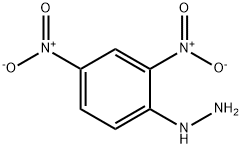
- Chemical Name:2,4-Dinitrophenylhydrazine
- CAS:119-26-6
- MF:C6H6N4O4
- Structure:
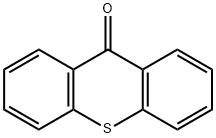
- Chemical Name:Thioxanthen-9-one
- CAS:492-22-8
- MF:C13H8OS
- Structure:
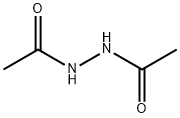
- Chemical Name:Diacetyl hydrazine
- CAS:3148-73-0
- MF:C4H8N2O2
- Structure:

- Chemical Name:Dodecanedioic Dihydrazide
- CAS:4080-98-2
- MF:C12H26N4O2
- Structure:

- Chemical Name:Thiocarbohydrazide
- CAS:2231-57-4
- MF:CH6N4S
- Structure:
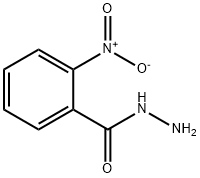
- Chemical Name:2-NITROBENZHYDRAZIDE
- CAS:606-26-8
- MF:C7H7N3O3
- Structure:

- Chemical Name:4-Ethylphenylhydrazine hydrochloride
- CAS:53661-18-0
- MF:C8H13ClN2
- Structure:

- Chemical Name:2-Chloro-4-fluorophenylhydrazine hydrochloride
- CAS:497959-29-2
- MF:C6H7Cl2FN2
- Structure:
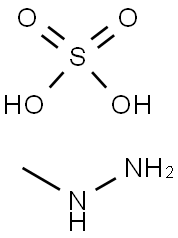
- Chemical Name:Methylhydrazine sulfate
- CAS:302-15-8
- MF:CH8N2O4S
- Structure:
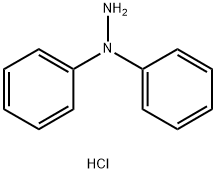
- Chemical Name:N,N-Diphenylhydrazinium chloride
- CAS:530-47-2
- MF:C12H13ClN2
- Structure:
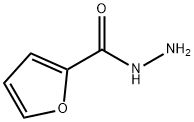
- Chemical Name:Furan-2-carbohydrazide
- CAS:3326-71-4
- MF:C5H6N2O2
- Structure:
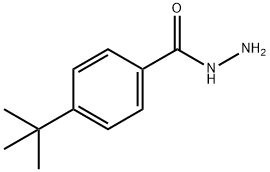
- Chemical Name:4-tert-Butylbenzhydrazide
- CAS:43100-38-5
- MF:C11H16N2O
- Structure:
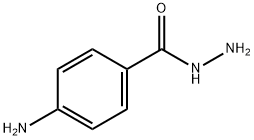
- Chemical Name:4-Aminobenzohydrazide
- CAS:5351-17-7
- MF:C7H9N3O
- Structure:
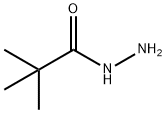
- Chemical Name:2,2-Dimethylpropionic acid hydrazide
- CAS:42826-42-6
- MF:C5H12N2O
- Structure:

- Chemical Name:2,5-Difluorophenylhydrazine hydrochloride
- CAS:175135-73-6
- MF:C6H7ClF2N2
- Structure:
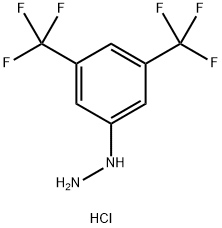
- Chemical Name:3,5-Bis(trifluoromethyl)phenylhydrazine hydrochloride
- CAS:502496-23-3
- MF:C8H7ClF6N2
- Structure:
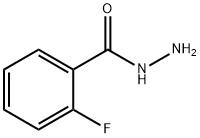
- Chemical Name:2-Fluorobenzohydrazide
- CAS:446-24-2
- MF:C7H7FN2O
- Structure:
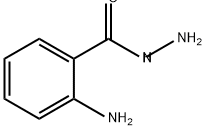
- Chemical Name:2-AMINOBENZHYDRAZIDE
- CAS:1904-58-1
- MF:C7H9N3O
- Structure:
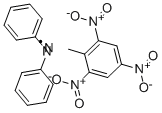
- Chemical Name:2,2-diphenyl-1-picrylhydrazyl
- CAS:1898-66-4
- MF:C18H12N5O6*
- Structure:
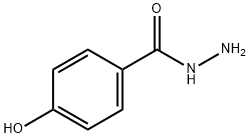
- Chemical Name:4-Hydroxybenzhydrazide
- CAS:5351-23-5
- MF:C7H8N2O2
- Structure:

- Chemical Name:OXALIC ACID BIS(BENZYLIDENEHYDRAZIDE)
- CAS:6629-10-3
- MF:C16H14N4O2
- Structure:

- Chemical Name:2-METHYLPROPYLHYDRAZINEHYDROCHLORIDE
- CAS:237064-47-0
- MF:C4H13ClN2
- Structure:
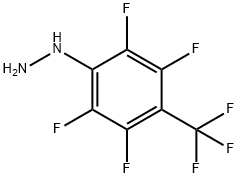
- Chemical Name:2,3,5,6-TETRAFLUORO-4-HYDRAZINOBENZOTRIFLUORIDE
- CAS:1868-85-5
- MF:C7H3F7N2
- Structure:
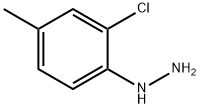
- Chemical Name:2-CHLORO-4-METHYLPHENYLHYDRAZINE HYDROCHLORIDE
- CAS:90631-70-2
- MF:C7H9ClN2
- Structure:
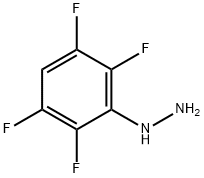
- Chemical Name:2,3,5,6-TETRAFLUOROPHENYLHYDRAZINE
- CAS:653-11-2
- MF:C6H4F4N2
- Structure:
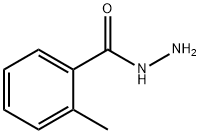
- Chemical Name:o-Toluic hydrazide
- CAS:7658-80-2
- MF:C8H10N2O
- Structure:
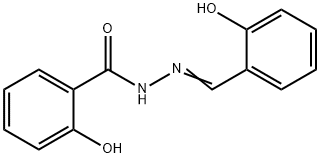
- Chemical Name:SALICYLIDENE SALICYLHYDRAZIDE
- CAS:3232-36-8
- MF:C14H12N2O3
- Structure:

- Chemical Name:3,4-DIMETHOXYPHENYLHYDRAZINE HYDROCHLORIDE
- CAS:40119-17-3
- MF:C8H13ClN2O2
- Structure:

- Chemical Name:PYRIDIN-3-YLMETHYL-HYDRAZINE
- CAS:7112-38-1
- MF:C6H9N3
- Structure:
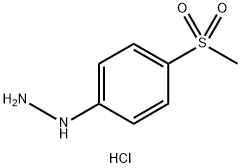
- Chemical Name:4-(Methylsulfonyl)phenylhydrazine hydrochloride
- CAS:17852-67-4
- MF:C7H11ClN2O2S
- Structure:

- Chemical Name:3-HYDROXYBENZYLHYDRAZINE DIHYDROCHLORIDE
- CAS:81012-99-9
- MF:C7H12Cl2N2O
- Structure:

- Chemical Name:STEARIC ACID HYDRAZIDE
- CAS:4130-54-5
- MF:C18H38N2O
- Structure:

- Chemical Name:(2,6-DIMETHYL-PHENYL)-HYDRAZINE
- CAS:2538-61-6
- MF:C8H12N2
- Structure:
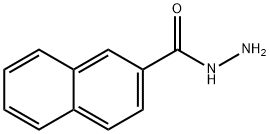
- Chemical Name:2-NAPHTHHYDRAZIDE
- CAS:39627-84-4
- MF:C11H10N2O
- Structure:
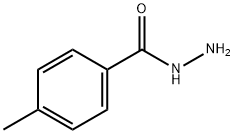
- Chemical Name:P-TOLUIC HYDRAZIDE
- CAS:3619-22-5
- MF:C8H10N2O
- Structure:

- Chemical Name:CYCLOBUTYLHYDRAZINE
- CAS:742673-64-9
- MF:C4H10N2
- Structure:

- Chemical Name:(3-BENZYLOXY-PHENYL)-HYDRAZINE HYDROCHLORIDE
- CAS:59146-68-8
- MF:C13H15ClN2O
- Structure:
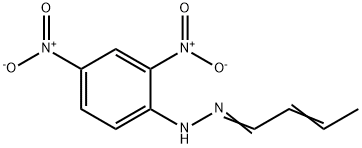
- Chemical Name:CROTONALDEHYDE (DNPH DERIVATIVE)
- CAS:1527-96-4
- MF:C10H10N4O4
- Structure:
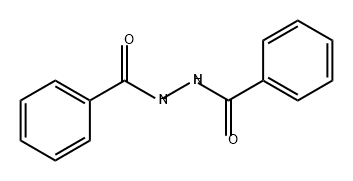
- Chemical Name:N,N'-DIBENZOYLHYDRAZINE
- CAS:787-84-8
- MF:C14H12N2O2
- Structure:

- Chemical Name:(3-FLUORO-BENZYL)-HYDRAZINE
- CAS:51421-16-0
- MF:C7H9FN2
- Structure:
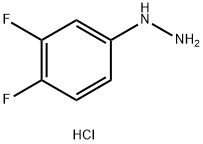
- Chemical Name:3,4-Difluorophenylhydrazine hydrochloride
- CAS:40594-37-4
- MF:C6H7ClF2N2
- Structure:
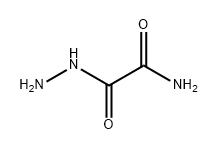
- Chemical Name:Oxamic hydrazide
- CAS:515-96-8
- MF:C2H5N3O2
- Structure:
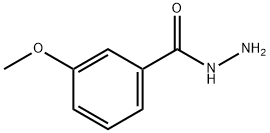
- Chemical Name:3-METHOXYBENZHYDRAZIDE
- CAS:5785-06-8
- MF:C8H10N2O2
- Structure:

- Chemical Name:1,1-DIMETHYLHYDRAZINE HYDROCHLORIDE
- CAS:593-82-8
- MF:C2H9ClN2
- Structure:
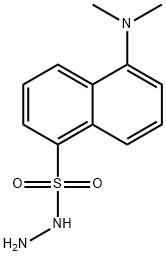
- Chemical Name:DANSYL HYDRAZINE
- CAS:33008-06-9
- MF:C12H15N3O2S
- Structure:

- Chemical Name:3-Cyanophenylhydrazine hydrochloride
- CAS:2881-99-4
- MF:C7H8ClN3
- Structure:
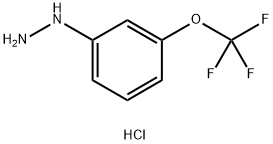
- Chemical Name:(3-TRIFLUOROMETHOXY-PHENYL)-HYDRAZINE HYDROCHLORIDE
- CAS:133115-55-6
- MF:C7H8ClF3N2O